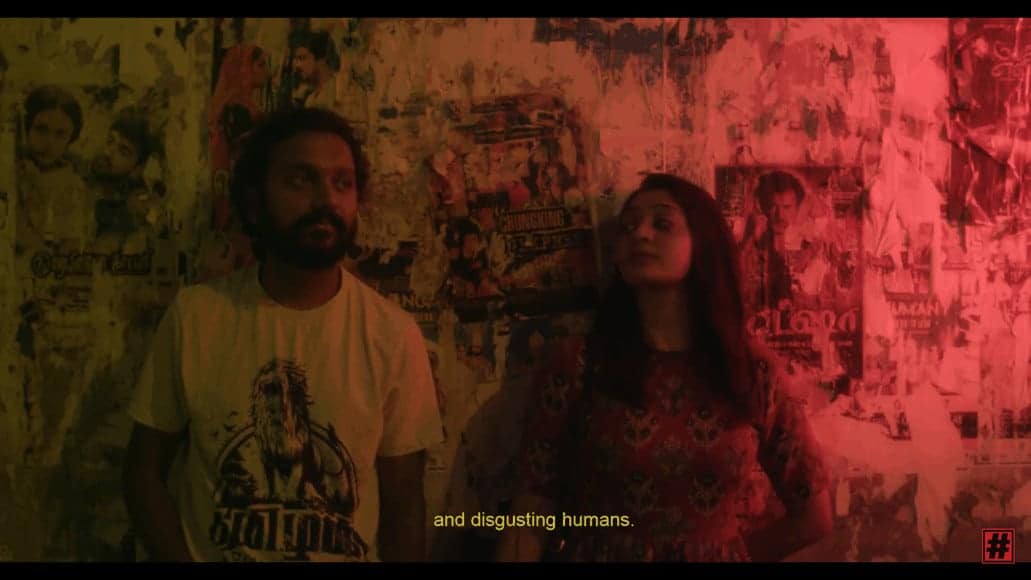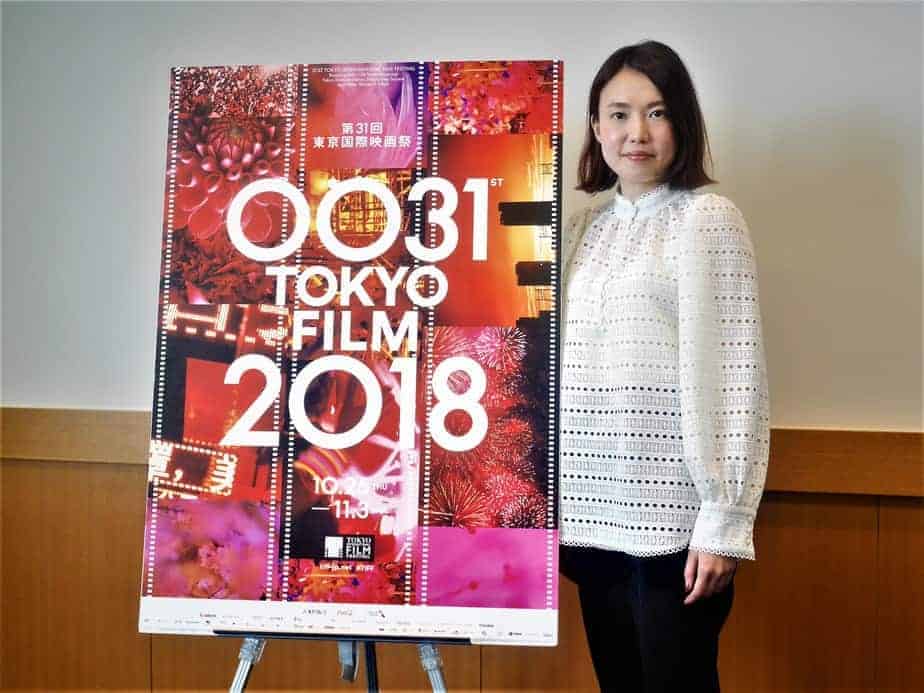Basically, the main idea behind ‘A man vanishes' is this: Imamura's camera following the steps of Oshima's (the missing salesman) fiance callled Yoshie and actor Shigeru Tsuyuguchi, as they wander from place to place, interviewing people who knew the salesman, in an effort to trace his lost footprints. Eventually, they try to process all the possible reasons behind his disappearance. It sounds simple, but it is not. The exchange of events, confessions and conclusions is taking place quite rapidly. This pacing makes the film quite a challenging experience to follow, especially without having a clear and, most of all, an open mind.
As I said before, an exaggerated analysis of such a film does not really matter at all, for the simple reason that Imamura's plan is to derail everything in order to make his points and also to refer to a Japanese social phenomenon known as ‘Johatsu'. In brief, ‘johatsu' stands for a state of complete evaporation of an individual against all kinds of social bonds. As Imamura informs us, at the time, 91.000 white collars (and not only) disappeared from their families and friends almost every year.
The film's opening sequence storms outquickly with a thorough description of Oshima's physical appearance narrated by a police admimistrative. We meet his boss who, as we can comprehend, is also some kind of father figure to the missing man. We are are informed that it is through this man he met his fiance, the woman who is in search of him.

As we follow Imamura's on-screen duet, we slowly sink into a void of numerous confessions and various information regarding Oshima's personality and habits, viewed from different perspectives. We watch his biological family expressing a hope for his well-being, but we are also taking a peek in a kind of ritual which is taking place through the presence of an old lady acting like a psychic. This sequence points out another dimension, a view which comes off as upsetting and disorienting, more than anything else regarding the case. Someone may assume this is a statement regarding traditional beliefs and how they leave a mark on a modern society concerning the human existence or the absence, in a world not so far from the one we live nowadays. Imamura tackles this issue with a very sharp, but also discreet way. He does not wish to exploit by creating a debate for the sake of an on screen contradiction. Nevertheless, he wants to stress the actual gap between logical thought progression and how easily we get distracted from it by letting the sequence speak for itself. The parents seem stressed by the facts and from the presence of the camera, almost lost, but at the same time they find the will to ask for forgiveness from Yoshie on behalf of their missing son.
We follow the camera and the two ‘leads' literally taking Oshima's route just before his traces disappeared. We get to meet his former lovers, we listen to the mixed and ambiguous comments made by his close friends and colleagues in an almost frenetic pace. Of course, given the chance, Imamura can't help allowing himself from making his own ‘comment' regarding the terms of working hierarchy in Japanese society. That comes through a case of embezzlement where Oshima was found stealing an amount of money from his job, which he returned back. Later on, this trait comes back in the form of a short but pompous speech delivered by Oshima's boss and father figure on his workers. It looks kind of funny, but so ironically poignant, all at the same time.
It's shot after shot after shot. Imamura runs the show in an intense way. He obviously wants us to get a sense of an identical feeling, as if we would go searching for our own missing person, our relative, friend or lover. But I have to stress once again that this is just the surface. To make it even more challenging and distressful, we have all these amazing jumping cuts and a constant – out of synch – narrative, especially in the first half of the film. There are moments where a black mark makes its appearance, covering the upper half face of those who want to speak a few word,s but they do not wish to reveal their faces in front of the camera. All this audiovisual complexity gives a mystical but irresistible avant – garde feeling, which adds an amazingly innovative as much as pure anarchic Warhol – esque essence on top of all the other virtues. It is disorienting and partially discomforting for an average viewer, but as we mentioned before, this is Imamura calling us here and he will play in his field exactly as he wants. He will not compromise for no one and for nothing.

Beyond a certain point, Imamura starts focusing on Yoshie rather than the actual case of the missing man. The truth is that Yoshie is a particularly strange personality, at least as she appears through Imamura's lens. She gradually starts losing her grip and her faith regarding the case, although at first she seems quite persistent. Someone might say she also becomes a bit fascinated by all this camera presence. Imamura is looking at her like an interesting study object, he and his crew refer to her as a ‘rat' they follow and who is leading them along the way through this labyrinth. The film starts changing tone and it becomes more of an essay on existentialism. There is also an out of nowhere case of Yoshie developing a crush on the actor who accompanies her along the way. This is the point where we get the impression that we move into uncharted waters. Yoshie starts focusing more on how she is going to to get over this loss rather than the actual objective. She is obviously feeling disoriented and it is becoming more and more obvious that Imamura will have to use a bit of improvisation in order to go on with the process of the film.
In addition, we get to meet Yoshie's sister, a character who will play a fundamental part until the final sequence. It's through their relationship that we have the chance to observe Yoshie's darker side. At the same time, the film adapts a quite Bergman – esque feel into it. Yoshie, who obviously has something like an underlying inferiority complex regarding her sexuality towards men, has suppressed hostile feelings against her sister that come from the past. Until that moment, she mostly believes that her almost non – existent sexuality is one of the main reasons that forced Oshima to run away. Suddenly, and after the initial meeting with her sister, we watch her react. She behaves like she is trying to find a scapegoat. Partially, she is convinced, almost dictated, by a psychic old lady that her sister was having an affair with Oshima. Later on, a testimony made by a shop owner located at the final place where Oshima was apparently seen, will revive the feud between Yoshie and her sister. The shop owner seems pretty sure that he saw Oshima and a woman who looks like her sister strolling around the place. This is the point where Imamura will find the chance to orchestrate his final sequence, which, as I mentioned beforem comes in an almost split in half but identical verbal conflict between the two women.
This time, Imamura will take the chance to exploit the feud between the two sisters as much as he can in order to present some kind of build – up, which in reality will never come to its peak. At first we watch Yoshie and her sister in an enclosed tea – room accompanied by Shigeru Tsuyuguchi. The confrontation starts quietly, until Yoshie spits out the accusation that she is pretty sure there was something going on between Oshima and her sister. To back up the speculation, Imamura himself will step inside the scene with the shop owner who implies that he saw them together. As a result, Yoshie starts acting like an interrogator. Suddenly, through a generic shot, we literally watch the set up collapsing, a trait which indicates that we are found inside a film stage. Everything is staged, although the climax seems utterly convincing. Just like a well-organised reality show. Following this sequence, the ongoing confrontation is brought on the streets with unsuspected people gathering around to watch this verbal ‘war' that has expanded between the two sisters and the shop owner who insists. This looks almost like a complete decompression rather than an actual ending, identical of these TV shows where people go to let some steam off against each other rather than actually solve any kind of difference in public.

This is how Imamura closes his film, in a very cold manner and leaving us almost exactly where he found us. After 130 minutes of bombarding us with this mixture of fictitious and real life events, almost like an augmented reality, he will let us do the aftermath on what we witnessed through his lens. Overall, this Imamurian experiment reminded me of Shakespeare's subject in his plays, and a beautiful article I had read regarding this view and couldn't agree more. The author wrote that in these plays, life is presented like the theater, essentially a fiction, and the task of the individual is to live in light of this realization. Nevertheless, in an alternate reality, I would love to ask both creators this cliche but very certain question: how thin is the line between reality and theatrical fiction, Imamura – san?













